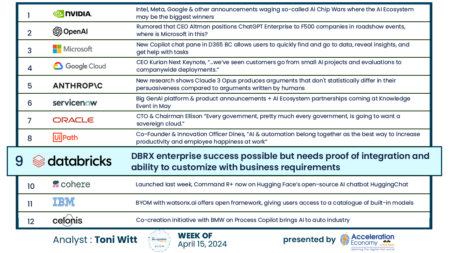“If you build it, he will come” is a legendary line from the iconic film Field of Dreams (1989). Like many things we see and experience in the movies, this isn’t reality especially as it relates to digital initiatives designed to wow and win over a customer via experiences.
We’ve all been a part of digital and customer initiatives to redesign customer experiences, buyer journeys, pervasive interfaces, mobile apps, services processes, etc. We go big. We are ready to change our customers’ world, and we swing and miss. To underline the point captured by recent Gartner research:
“…Although 81 percent of customer experience (CX) leaders believe CX will soon be the basis on which their companies compete, yet only 22 percent say their efforts are exceeding customers’ expectations.”
Give customers a great digital experience, and they’ll buy more, be more loyal, and share their experience with colleagues and friends (“they will come!”). That’s what every business strives for, whether it is B2B or B2C. Yet so many customers seem underwhelmed. The team at PWC labels this an “experience disconnect.” Companies and their teams get so amped up on the coolest technology, fancy user interface (UI), or underlying artificial intelligence (AI) capability that they miss what experiences are all about.
Creating Impactful Customer Experiences
A positive CX definition is subjective, and of course heavily depends on the digital application, solution, or service involved. CX includes all customer interactions and touchpoints with your brand and business. So, what makes for a “good” or “positive” customer experience? Let’s breakdown the important digital customer experience attributes most cited by seasoned CX leaders:
Convenience
“Make it easy to do business, transact, and interact” is the most cited customer expectation, especially in this era of customers’ instant gratification expectation. Convenience is a primary example of why we must put ourselves in our customers’ shoes to identify the right tech and user design. CX experts recommend prioritizing CX design around customers’ most common use cases while working relentlessly to develop the easiest paths to buy products, access info, and resolve issues.
Consistency
It’s cool to be innovative, but it’s more important to be consistent in the delivery of your product, service, or relationship. Humans don’t like radical change and they definitely don’t like too much change too fast. Customers prefer similar, pervasive experiences across the web, apps, and in-person. Customers want to know what to expect.
Intuitive
The most impactful CX outputs are the experiences that customers identify as the most simple, easy to navigate, and intuitive. While CX can have moments of surprise, this shouldn’t happen in the CX. “Delight” and “wow” happen because your product or solution was just what they needed, when they needed or wanted it.
Speed
The teammate to convenience is the ability to do business at the speed of your customer. CX is judged by customers based on their ability to make things happen at their fingertips anytime and anywhere. Speed also includes the fundamentals, such as the responsiveness of apps (five-second web rule) and the ability to route calls and communications to live agents and employees when an assist is needed.
Human
Even in the most technical and complex environments where AI and automation reign, CX must be built on and infuse human experiences. The right level of humanness is a bit trickier because all customers are not created equal when it comes to wants, needs, and expectations.
With the goal of building relationships and brand loyalty, high-performing CX can be as simple as showing the customer you know and value them. For example, presenting information customers should and can use at the right time, communicating with friendly, accessible language, and/or providing prompts and visuals to guide customers and recommend items.
Avoiding Common CX Disconnects
We’re not going to nail customer experience 100% of the time but we can decrease the odds of the swing and miss scenario which results in lost customers.
Despite the best intentions and design talent, CX leaders identify common digital customer experience disconnects. The below can be addressed proactively as you kickstart and manage your next digital customer initiatives.
Complexity is a foe and simplicity is a friend.
Keep it simple. Take out the extra step or click. Don’t ask for information you already have. Don’t become too obsessed with the coolest, latest tech, but rather what’s right to get the customer what they need or what they need to do next. CX leaders counsel not to give customers too many options.
Ignore customers’ emotional investment and miss human empathy.
Emotions drive decisions, so make sure you spark emotion in your customer interactions. It can be as simple as greeting them, acknowledging their loyalty, or letting them control and organize their view or experience.
Too much internal design focus and not enough focus on the customers’ world.
Define your customer or user profiles and types, and design to their needs. Invest the time and resources to do rigorous customer research. Ask for feedback and input, and user testing must be extensive and continuous.
Oversteer on security lockdown versus providing secure access.
Ensuring privacy and safety is paramount. However, CX experts recommend assigning the right level and type of security and accessibility effort with the risks. Avoid universal security policies where possible. Involve your security team from the start as well as throughout the development and customer lifecycle to get the right amount of security.
Self-serve without access to customer agents.
A knowledgeable, empowered, and easily accessible support team is essential for nearly all digital apps and experiences. Proactive and available resources to guide, help, and resolve customers are part of CX. To put this into perspective, by the time a customer reaches out with a problem, it’s likely nine out of 10 customers have had the same problem and have moved on to an alternative option.
Establishing a Culture of CX Accountability to Make Customer Connections
Digital CX is the front door to customer relationships. Ensuring we have the welcome mat out, the right lighting, and the optimal room set up is essential to winning and creating happy, loyal customers.
Remember, CX is never done. It is essential to monitor CX, proactively ask for feedback, and to take ownership quickly when the team doesn’t get the CX quite right. With accountability and agility part of a high-performing customer-centric culture, experiences can be quickly adapted and reimagined to earn the trust of our customers in this digital-first world. You never get a second chance to make a first, second, or 21st impression.
Want more tech insights for the top execs? Visit the Leadership channel:








